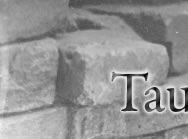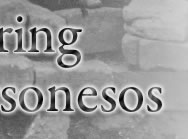| Отчет о раскопках Херсонесской экспедиции Государственного Эрмитажа в 1975 г. Текст и иллюстрации |
| Year: 1975 |
|
Author
G. D. Belov
|
|
Description
In the year under report, the expedition's work was te direct continuation of the previos years excavations in quarter XXVIII in the north area of Chersonesos. Excavations of rooms nos. 26 and 27 were finished, Late Mediaeval rooms and courtyards nos. 29-39 were unearthed anew, and below them, the excavations were made down to the virgin soil, apart of room no. 37, which appeared to be above a fish-salting cistern, and courtyard no. 39, excavation of which was not finished. Total area of the excavations in the year under report is about 300 square metres (see fig. 1 for the ground plan). The newly discovered sites of building were conserved by the museum restorers: seams of masonry of top part of walls arecoated with mortar, apertures in walls, where had been joining beams fired when houses declined, were filled with mortar. The mouth of well K was blocked with a large slab with cement mortar. As it has already been mention in previous years reports, remains of buildings and cultural layers in quarter XXVIII remainedunevenly. Late Mediaeval houses from the thirteenth and fourteenth century are in better condition, because no later works were conducted after the fall of the city. Walls from the Early Middle Ages and Greco-Roman Period that lay below with cultural deposits accompanying them survived only partly. Particularly, 1974-1975 excavation area contained only subterranean rooms, cellars and cisterns from the Hellenistic Period. A few more object have survived from the first centuries AD. |





